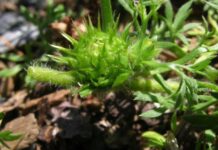
You’re not alone if you want your lawn to be green and dense. Everybody wants to look as green as possible on their lawn, but a lot of people don’t understand what’s going to make that happen.
By giving it what it needs to flourish, the key is to make sure that your lawn is as safe as possible.
It takes a bit of work to turn a small, brown, patchy lawn into something that will make the neighbors jealous, but it is not difficult. To make your lawn greener and thicker, here’s what you need to do.
1. First Check the quality of your soil
Many individuals just select a fertilizer, add it to their grass, and then wonder why they don’t get results. The fact is that you must know what’s going on in the soil before you can fertilize the lawn properly.
One of the best things you can do to promote lush, green grass is soil testing. Your lawn’s health also depends on the soil’s pH. On a scale of 1 to 14, soil pH is measured. Seven would be neutral. Your soil is acidic if the result is lower than 7. Your solids are alkaline if they are higher than 7.
A soil test also identifies which minerals and components are missing, so that you know if something needs to be replaced. At most garden stores, soil testing kits are available, and you can buy them online. Testing meters that are inserted into the soil can also be found and send you a pH reading immediately.
Most soils are naturally acidic in the Pacific Northwest and in the eastern U.S. A lot of diseases and weeds like acidic soil, so if you want a safe, thick green lawn, it’s an important thing to recognize and correct.
Adding lime is advised to decrease the acidity of acidic soil. However, this is a lengthy process, and not something that you can address overnight. In the fall, the best time to start the process is to develop the issue before summer, but at any time of the year, you can do it. As a bonus, magnesium, and calcium are also found in lime, which can also enhance lawn growth.
Most soils are alkaline in the southwest and the central U.S., mainly because they do not see as much rain in these regions. Plants have a difficult time absorbing nutrients when the soil is alkaline. This means that your grass would not be able to use it appropriately, even though you add fertilizer.
Add a soil conditioner that contains sulfur to boost the alkaline soil. Sphagnum peat moss is widely used because it’s a natural choice, and if regularly applied to the soil, organic composting can be successful.
You’re able to move on to the next stage once you’ve made the requisite changes.
2. Supervise the lawn
The method of applying fresh grass seed to an existing lawn to fill in holes and make the lawn thicker is monitored. This is something experts do on a daily basis which offers remarkable outcomes. The best periods to be supervised in the north are in the fall and spring; it’s late spring in the south.
Notice that if you first check and correct your soil, monitoring is likely to be more effective. If your soil is acidic or alkaline, it is unlikely you can get the results you want from overseeing it.
3. Add the correct fertilizer
Your lawn needs to be water, just as all plants do. Rainfall and irrigation leach away the nutrients required, so frequent fertilization in the summer helps encourage healthy growth to ensure that your lawn has what it needs.
Check for a fertilizer that has both gradual and immediate nitrogen release. The sort of slow-release feeds your lawn over approximately three months, while your lawn will quickly use the rapid release.
Check Here What is the Best Fertilizer for Roses?
The Next Phase
Your lawn should begin to look thicker and greener once you have made the required improvements to your soil and have allowed the overseeding to grow in. Now that you’ve got the lawn you love, you’ve got to take care of it to make sure that it stays that way.
4. Appropriately water the lawn
Good lawn watering practices will help the new growth continue to flourish as things start going in the right direction. To germinate, new seeds need constant moisture, so make sure you begin to water more after you are supervised.
Lawns normally require about an inch of water per week after your lawn is a little more mature and the new growth has filled in. If you live in a humid environment, at least for a few weeks, you could get this from the storm. If not in order to maintain growth, use a garden hose or sprinkler system.
Irrigation systems are also highly productive because they provide deep, thorough irrigation that promotes deeper growth of the grassroots, stabilizing the lawn.
When supervising your lawn, pay careful attention to the grass seed you pick. Certain types of grass are more tolerant of dry conditions. Choosing one of these varieties will help your lawn stay green if you live in an area that does not get a lot of rain, even if it does not rain for weeks at a time.
Also, See
- Top 10 Best Oscillating Sprinkler in 2024 – Buying Guide
- 10 Best Lawn Sprinkler Heads – 2024 Buying Guide
5. Mow the right way around your lawn
Don’t look at the calendar, look at the grass itself to decide when it is time to mow. Ideally, in a single mowing operation, you should never remove more than a third of the total lawn height. If you cut too much the grass that determines future growth can be stressed.
It matters, too how you mow your lawn. Wait for the grass to dry, both from the rain and from the dew. Before it gets too hot outside, you might prefer to mow your lawn in the morning, but this is not what is best for the grass.
The lawnmower may get clogged with wet grass, so you’ll have to keep stopping to remove lumps of grass. You’re not going to get as much momentum, meaning you have less leverage. You will operate more efficiently if you wait until later in the day without causing damage to your mower.
Let your grass grow somewhat longer. Ideally, when freshly cut, it should be approximately four inches long. This is too long, many people think, but longer grass stores more humidity and develops stronger roots, both of which are needed for a dense, green lawn.
Take the time to make sure that each blade is cut to the same height and mowed in a pattern so that no areas are missed. Keep the blade of the lawnmower clean, too. This provides a clean cut which is much better than a ragged edge for your lawn.
6. Aggressively handling weeds
Weeds compete for water, sunshine, and nutrients with your grass, so it is important to have a lush, thick lawn to keep them under control. The more weeds you have the less your grass receives nutrients.
This way, think about it. You spent a lot of time correcting, overseeing, and mowing your soil for what? To help the weeds prosper? If weeds take over all your work up until this point won’t be successful.
In the early Fall, the best time to go after the most common weeds is. If your lawn is grown, use a pre-emergent herbicide to help destroy the weeds before they come out in the spring. If this form of fertilizer is used for supervision, it will prevent the seeds from germinating.
Grab the time to make it right
The takeaway is that it is not hard to make lawn green and dense, but it requires a bit of time and patience. Keys to the rest of the process working are to start the process with a soil test and to correct soil pH if necessary. You will not be able to get the results you want if you don’t have a strong base for your grass to grow.
- The Best 10 Poison Ivy Killer in 2024 – Buying Guide
- The 8 Best Liquid Lawn Fertilizers – 2024 Buying Guide
Final Thoughts
You’ve got it there! That’s how to make your lawn green and thick with grass.
Continue to test the soil, get rid of weeds, and supervise when needed, and keep your lawn looking new and green.
Hey, if you begin to get jealous glares from your neighbors who wish their yard was as stunning as yours, it is not our fault! (Don’t say that we haven’t warned you)
Also, See






